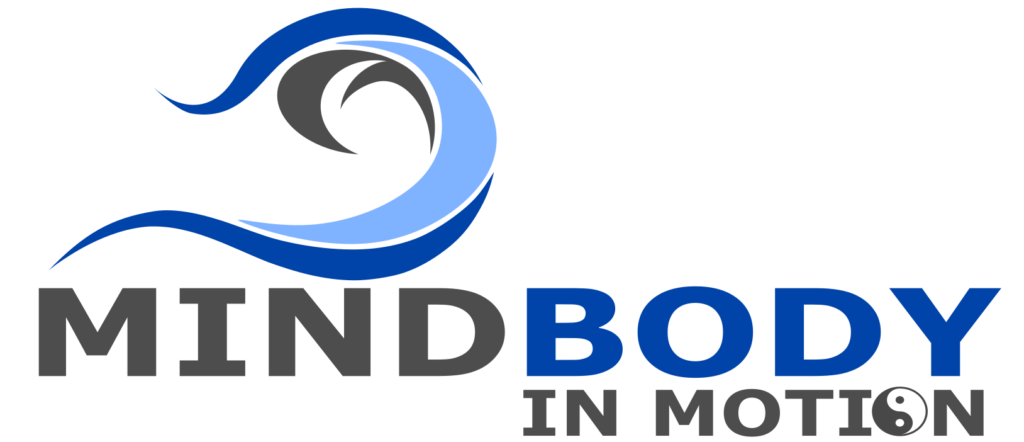In a world that often feels frenetic and overwhelming, the ancient practice of Qigong offers a pathway to tranquility and vitality. This holistic discipline, deeply rooted in Chinese culture, empowers practitioners to harness their inner life energy, or “Qi,” cultivating a harmonious balance between body, mind, and spirit. By immersing oneself in Qigong, individuals can unlock profound benefits, including enhanced physical health, emotional well-being, and mental clarity.
WHAT IS QIGONG? DISCOVERING THE ESSENCE OF LIFE ENERGY

At its core, Qigong is a meditative practice that combines gentle movements, focused intention, and breath control to cultivate and balance Qi. Derived from the Chinese words “Qi,” meaning life force, and “Gong,” meaning work or practice, Qigong translates to “the practice of cultivating life energy.” This ancient art form encompasses a range of techniques, including flowing movements, static postures, and breathing exercises. As practitioners engage in Qigong, they learn to sense, enhance, and direct their inner energy, promoting holistic health and vitality.
THE RICH HISTORY OF QIGONG: ANCIENT ROOTS AND MODERN RELEVANCE
The origins of Qigong can be traced back thousands of years to ancient China, where it was interwoven with the philosophies of Daoism, Buddhism, and traditional Chinese medicine. Initially developed as a method for self-healing and spiritual cultivation, Qigong has evolved into a widely practiced form of wellness in the modern world. Today, its relevance extends beyond the confines of Chinese culture, appealing to individuals seeking alternative approaches to health and well-being. As scientific research increasingly validates the benefits of Qigong, it continues to gain recognition in therapeutic and wellness communities worldwide.

UNDERSTANDING QI: THE VITAL LIFE FORCE BEHIND QIGONG
Qi is the fundamental energy that animates all living beings. This unseen force flows through the body along pathways known as meridians, sustaining physical health and vitality. In Qigong, practitioners aim to cultivate a harmonious flow of Qi, allowing it to circulate freely throughout the body. When Qi is abundant and balanced, individuals experience optimal health; conversely, stagnation or deficiency of Qi can lead to physical ailments and emotional disturbances. By learning to harness and direct this life force, Qigong practitioners can restore balance and promote healing.
THE CORE PRINCIPLES OF QIGONG: HARMONY OF BODY, MIND, AND SPIRIT
The practice of Qigong is founded on several core principles that emphasize the interconnection of body, mind, and spirit. Central to these principles is the idea of harmony. Through intentional movement and breath, practitioners cultivate a profound sense of awareness, allowing them to synchronize their physical actions with mental focus and emotional equilibrium. This holistic approach fosters resilience, encourages mindfulness, and nurtures a deep connection with oneself and the surrounding environment.
THE ROLE OF BREATH IN QIGONG: TECHNIQUES FOR HARNESSING ENERGY
Breath is the bridge between the mind and body, and in Qigong, it serves as a vital tool for cultivating and directing Qi. By practicing specific breathing techniques, individuals can enhance their energy flow, calm the mind, and promote relaxation. One common method is abdominal breathing, where the diaphragm expands and contracts with each inhalation and exhalation. This deep, rhythmic breathing not only energizes the body but also facilitates emotional release, paving the way for inner peace and clarity.

GENTLE MOVEMENTS OF QIGONG: FLOWING WITH PURPOSE AND GRACE
The gentle, fluid movements of Qigong are designed to be accessible to practitioners of all ages and fitness levels. Each movement is performed with intention and mindfulness, allowing for a graceful expression of energy. These movements often mimic the natural rhythms of nature, promoting a sense of connection to the earth and the cosmos. As practitioners flow through sequences, they cultivate awareness of their bodies, improve balance and coordination, and enhance flexibility—all while soothing the mind and spirit.
EXPLORING DIFFERENT STYLES OF QIGONG: FINDING YOUR PATH
Qigong encompasses a diverse array of styles, each with its own unique focus and techniques. From the meditative and restorative practices of Yin Qigong to the dynamic and vigorous movements of Shaolin Qigong, individuals can explore various approaches to find the style that resonates with them. Some practitioners may be drawn to therapeutic Qigong, which emphasizes healing and recovery, while others might prefer martial arts-influenced styles that incorporate self-defense elements. Each style offers distinct benefits, making it essential for practitioners to experiment and discover their personal path within the rich tapestry of Qigong.
THE CONNECTION BETWEEN QIGONG AND MEDITATION: MINDFUL MOVEMENT
Qigong is often described as a moving meditation, seamlessly integrating physical movement with mental focus. The meditative aspect of Qigong encourages practitioners to cultivate mindfulness, allowing them to immerse themselves in the present moment. This union of movement and meditation fosters a deep state of relaxation, reducing stress and anxiety. As individuals learn to quiet their minds, they become more attuned to their bodies, heightening their awareness of subtle sensations and energy flows.
THE BENEFITS OF QIGONG: TRANSFORMING HEALTH AND WELL-BEING
The practice of Qigong offers a multitude of benefits that can transform both physical and mental health. Research indicates that regular Qigong practice can improve cardiovascular health, enhance respiratory function, boost the immune system, and promote overall vitality. Additionally, Qigong is known for its ability to alleviate stress, anxiety, and depression, making it a powerful tool for emotional well-being. As practitioners engage in this holistic practice, they often report increased energy levels, improved sleep quality, and a greater sense of inner peace.
QIGONG FOR STRESS RELIEF: CULTIVATING CALM IN A CHAOTIC WORLD

In today’s fast-paced environment, stress has become an all-too-common experience. Qigong provides a sanctuary for individuals seeking relief from the pressures of daily life. By incorporating gentle movements, focused breath, and mindfulness, Qigong facilitates a profound sense of relaxation. Practitioners learn to release tension held in the body, calm racing thoughts, and cultivate emotional resilience. Through consistent practice, Qigong becomes a refuge—a space where one can restore balance and nurture a sense of serenity.
ENHANCING PHYSICAL HEALTH WITH QIGONG: STRENGTH AND FLEXIBILITY
Beyond its mental and emotional benefits, Qigong also serves as an effective means of enhancing physical health. The gentle movements promote flexibility and strength, engaging various muscle groups without the strain associated with more intense forms of exercise. As practitioners perform Qigong, they develop improved posture, greater range of motion, and enhanced coordination. This low-impact practice is suitable for individuals of all ages, making it an ideal choice for those looking to maintain or improve their physical fitness.
EMOTIONAL HEALING THROUGH QIGONG: NURTURING YOUR INNER SELF
Emotional health is a vital component of overall well-being, and Qigong offers a unique approach to emotional healing. By fostering a deeper connection with oneself, practitioners can explore and release pent-up emotions that may be hindering their personal growth. The meditative aspects of Qigong encourage introspection, allowing individuals to confront and process their feelings in a safe and nurturing environment. Through this exploration, one can cultivate emotional resilience, develop a greater sense of self-awareness, and ultimately embrace a more authentic and fulfilling life.
USING VISUALIZATION IN QIGONG PRACTICE: IGNITE YOUR IMAGINATION
Visualization is a powerful tool in Qigong practice, enhancing the connection between the mind and body. Practitioners often visualize the flow of Qi within their bodies, imagining vibrant energy coursing through each meridian. This mental imagery not only reinforces the practice but also deepens the sense of relaxation and connection. By incorporating visualization techniques, individuals can amplify their intention, fostering a more profound experience during their Qigong sessions.
CREATING A QIGONG ROUTINE: STEPS TO INCORPORATE INTO DAILY LIFE
To fully reap the benefits of Qigong, establishing a regular practice is essential. Start by setting aside dedicated time each day for practice, even if it’s just a few minutes. Begin with simple movements and gradually incorporate more complex sequences as you become comfortable. Creating a serene environment, free from distractions, can enhance your practice. Consider blending Qigong with other wellness practices, such as yoga or meditation, to enrich your routine. Consistency is key; the more you practice, the more profound your connection to your inner life energy will become.
CHOOSING THE RIGHT ENVIRONMENT: SETTING UP YOUR QIGONG SPACE

The environment in which you practice Qigong can significantly impact your experience. Seek a space that feels peaceful and conducive to relaxation. Ideally, this should be a quiet area free from interruptions. Consider incorporating elements of nature, such as plants or natural light, to enhance the ambiance. Soft music or the sounds of nature can also create a tranquil atmosphere. By setting the right stage, you invite a deeper connection with your practice, allowing your inner life energy to flow freely.
QIGONG FOR ALL AGES: ADAPTING PRACTICES FOR EVERYONE
One of the remarkable aspects of Qigong is its inclusivity. It is a practice suitable for individuals of all ages and fitness levels. Whether you are a child, an elder, or someone in between, Qigong can be adapted to meet your needs. For children, playful movements can encourage creativity and focus. For older people, gentle and restorative practices can improve mobility and overall health. No matter your age or ability, Qigong offers a versatile pathway to cultivate vitality and well-being.
FINDING COMMUNITY IN QIGONG: CONNECTING WITH LIKE-MINDED PRACTITIONERS
Practicing Qigong within a community can enhance the experience, fostering a sense of connection and support. Group sessions provide an opportunity to learn from experienced instructors, share insights, and gain motivation from fellow practitioners. Many communities offer Qigong classes, workshops, and online resources, making it accessible to anyone interested in exploring this ancient art. By connecting with others on the same journey, you can deepen your understanding and sustain your commitment to practice.

CONCLUSION: EMBRACE THE TRANSFORMATIVE POWER OF QIGONG
In embracing Qigong, you embark on a journey of self-discovery and transformation. This ancient practice offers a pathway to inner peace, vitality, and resilience. By dedicating time to cultivate your life energy, you can experience profound benefits that extend beyond the physical realm. Qigong is more than a practice; it is a way of life—one that empowers you to live with intention, harmony, and a renewed sense of purpose. Start your journey today and unlock the boundless potential within.









